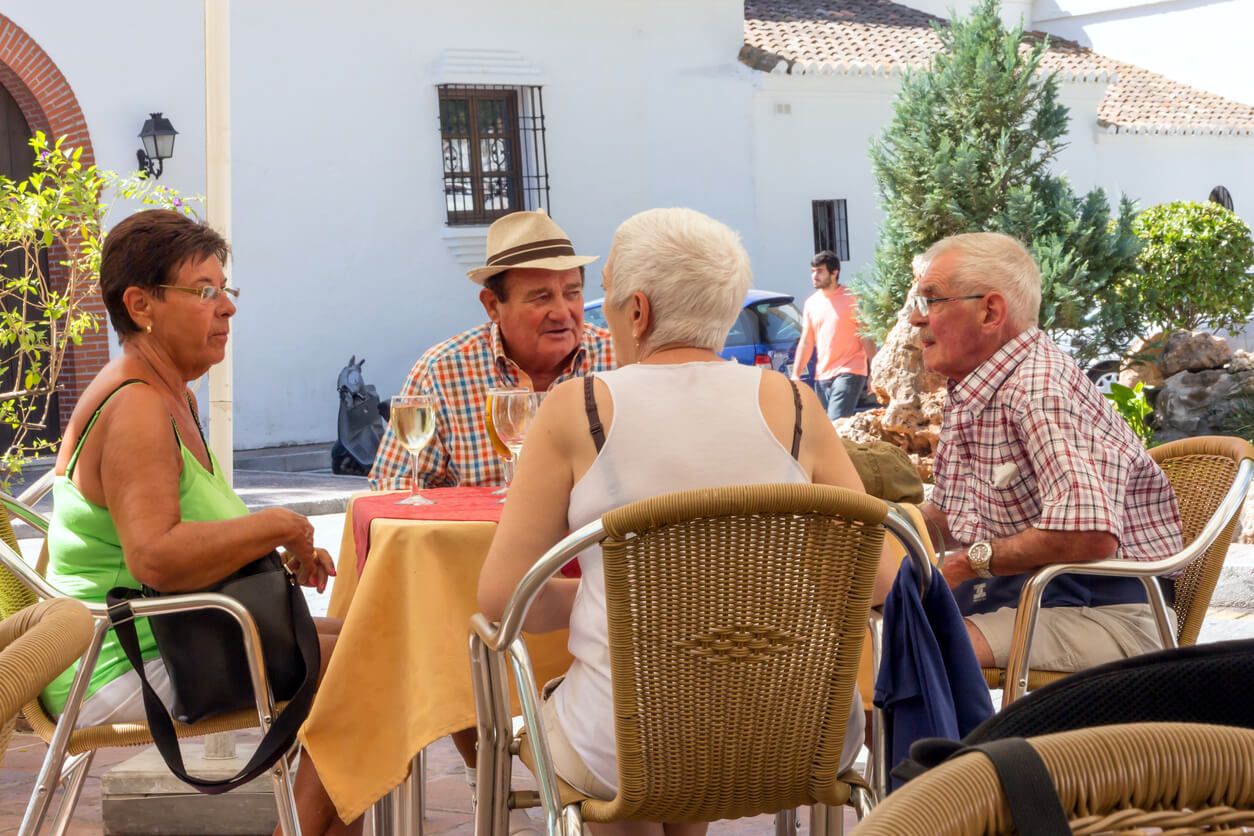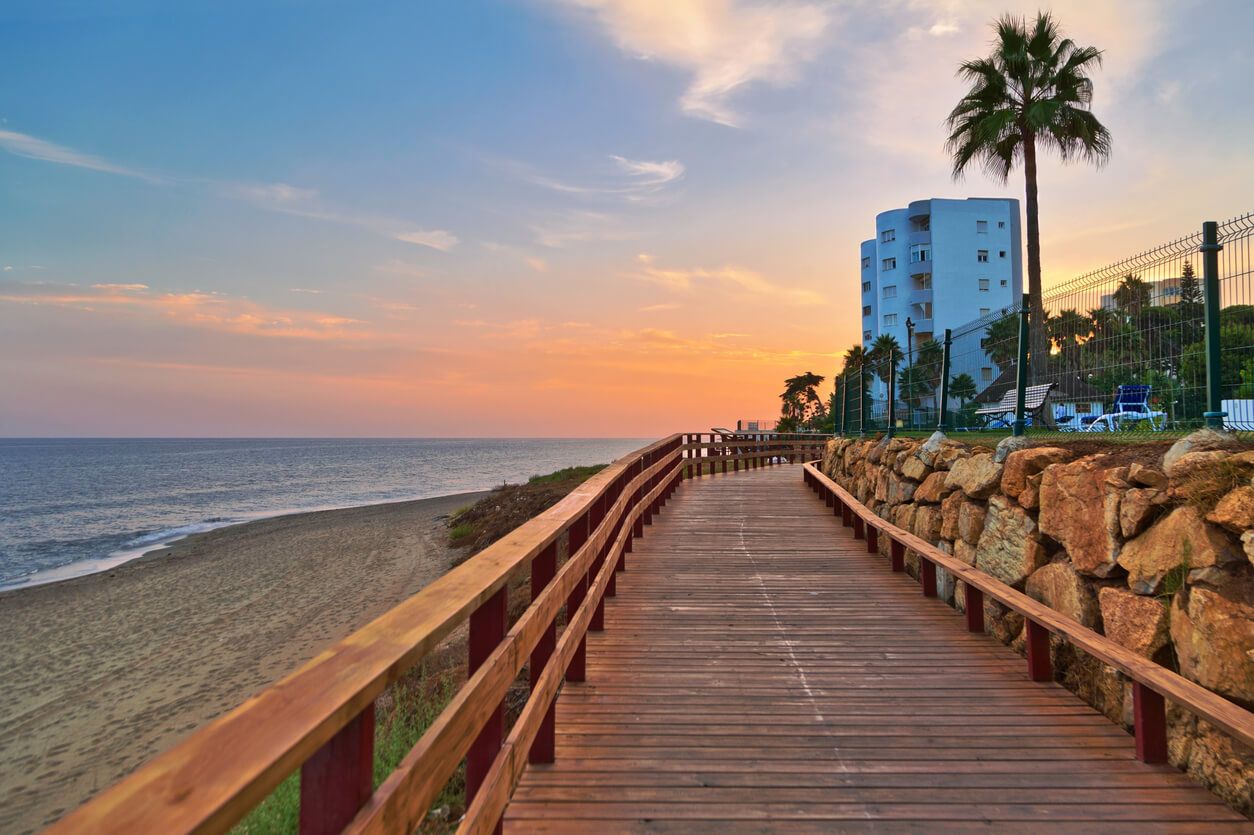Listen directly to what Alex Radford has to say about property tax in Spain in our exclusive video.
Buying a property in Spain is an exciting step, whether it’s a retirement dream, a second home by the sea, or an investment in Europe’s sunshine economy. But beyond the bricks and mortar, there’s one thing every buyer needs to understand: property tax in Spain.
Spanish property taxes can feel daunting if you’re used to a different system back home. There are taxes at the time of purchase, ongoing annual charges, and even costs when you sell. Add in regional variations and different rules for residents versus non-residents, and it’s easy to see why confusion is common.
That’s where expert advice is invaluable. To help clarify the essentials, we spoke with Alex Radford, Partner at My Lawyer in Spain, who has guided thousands of international clients through Spain’s legal and tax system. His insights throughout this guide will give you practical reassurance and a clear picture of what you can expect when buying property in 2025 and beyond.
Listen directly to what Alex Radford has to say about property tax in Spain in our exclusive video.
When you buy, own, or sell a property in Spain, you’ll come across several different taxes. These aren’t all due at once, but it’s important to understand how they fit together, because they can significantly affect your overall costs.
Broadly speaking, property taxes in Spain fall into three main categories:
For international buyers, it’s also essential to understand how these taxes apply differently to residents and non-residents. As legal expert Alex Radford puts it, Spanish property tax isn’t designed to catch you out — but you do need to know what’s expected.

Buying a home in Spain isn’t just about agreeing a purchase price with the seller. On top of that price, you’ll also need to budget for purchase taxes, which can add anywhere from 7–12% to the overall cost of your property. These are some of the largest expenses you’ll face in the buying process, so understanding them early helps avoid any last-minute surprises.
The taxes you’ll pay depend mainly on:
As legal expert Alex Radford explains, these taxes are built into the purchase process:
“So when you buy a second-hand property, you’re going to pay transfer tax and that varies from region to region.”
Here’s a breakdown of some regional rates in 2025 (using Alex’s examples):
| Region | Transfer Tax Rate (ITP) |
| Canary Islands | 6.5% |
| Andalusia | 7% |
| Murcia | 8% |
| Valencian Community | 10% |
| Barcelona (Catalonia) | 10% |
| Balearic Islands | 8-10% (depending on property value) |
In practical terms, this means that two buyers paying the same purchase price in different regions could face very different tax bills. For example, a €200,000 resale apartment in Valencia would attract €20,000 in Transfer Tax (10%), while the same property in Andalusia would cost €14,000 in Transfer Tax (7%).
If you buy a brand-new property or one that’s still under construction (off-plan), you won’t pay Transfer Tax. Instead, you’ll pay Value Added Tax (IVA), which is charged by the developer and collected by the Spanish tax authorities.
For residential properties, VAT is generally 10% of the purchase price. This makes it one of the most significant costs when buying new.
Alex shares a practical example that illustrates how VAT is applied:
“If you’ve got to put a €6,000 deposit down, it’ll be €6,000 plus typically in Andalusia, 10% VAT on top of the purchase price. So you’ll be paying a deposit of €6,600.”
Important points:
In addition to VAT, buyers of new or off-plan properties must also pay Stamp Duty (AJD). While smaller than VAT, this tax still adds thousands of euros to the purchase costs and shouldn’t be overlooked.
Alex explains:
“Once you’ve completed the property purchase of an off-plan property, you’ll pay stamp duty and that ranges from region to region between 1 and 2%.”
Unlike VAT, Stamp Duty is set by each autonomous region. This means the percentage can vary depending on where your property is located.
Key things to know about Stamp Duty:
Combined with VAT, the upfront tax burden on a new build is usually higher than on a resale property. That’s why many buyers weigh the total tax bill when deciding between a resale and a brand-new home.

Buying your dream home in Spain is only the beginning. Once the keys are in your hand, you’ll face a set of recurring property taxes that are charged annually. These apply whether you live in Spain full-time, use your property as a holiday home, or hold it as an investment. Fortunately, most of these charges are relatively modest compared to many other countries, but it’s important to plan for them in your budget.
Spain’s equivalent of council tax is the Impuesto sobre Bienes Inmuebles (IBI), which is charged by local town halls. In the Valencian Community it’s called Suma, but the principle is the same: it’s a tax on property ownership.
IBI is calculated based on the property’s cadastral value, a government-assigned valuation used for tax purposes. This figure is usually lower than the market value of your home, which keeps the bill relatively affordable.
Alex notes the positive surprise many buyers feel:
“Depending on the area… in Andalusia, it’s called the IBI. Up in the Costa Blanca, the Valencian Community, it’s called Suma. Many Northern European clients and clients from the States and Canada will be very happily surprised at how cheap some of these town hall rates are compared to their home countries.”
What to expect:
Always check with the seller or estate agent what the current IBI bill is before you buy. This gives you a realistic idea of ongoing costs.
If you own a property in Spain but don’t live there permanently, you’ll need to pay non-resident income tax (IRNR). This applies whether or not you rent out the property.
Alex highlights how modest this tax can be:
“If you’re a non-resident based on, say, a property of €200,000, the non-residence income tax could be like €200 or €300 a year. So it’s a negligible amount.”
Key points:
For a €200,000 property that you don’t rent out, you might expect to pay around €200–€300 per year in IRNR. If you earn €10,000 in rental income, the tax would be applied at the relevant non-resident rate instead.
Wealth Tax in Spain only affects higher-value properties or owners with significant assets. It’s a tax on your net worth, including property, savings, and investments, after deducting allowances and mortgages.
It mainly affects high-net-worth buyers with large property portfolios.
Thresholds vary by region:
This tax mainly impacts high-net-worth buyers or those with multiple properties. For most everyday buyers, it will never apply.
If you’re considering a portfolio of Spanish properties or relocating with significant assets, it’s worth consulting a tax advisor to understand whether Wealth Tax might apply in your chosen region.

When you eventually sell your property, two taxes may apply:
Capital Gains Tax applies on the profit made between your purchase price and your sale price (minus certain allowable costs like notary fees or renovations).
Rates for 2025 are progressive:
You can learn more about capital gains tax in Spain in our complete guide to capital gains tax in Spain.
Plusvalía is a municipal tax charged on the increase in the value of the land your property sits on since it was last sold. It’s calculated and collected by the local town hall, and is separate from Capital Gains Tax.
A 2022 reform changed the way this tax is calculated. Sellers now have two options:
The idea is to make the tax fairer, especially in cases where property values have not risen significantly.
Key points:
For example, on a home you’ve owned for 15 years in a growing coastal town, Plusvalía could add several thousand euros to your selling costs. Whereas, in a stagnant market with little land value increase, the amount may be much lower, or even exempt.

For non-Spanish residents, property taxes often raise the most questions — especially for those buying a second home, planning a retirement move, or splitting their time between countries. The key point to remember is that owning a property in Spain always carries tax obligations, no matter how often you use it.
The essentials for foreign owners:
A common misunderstanding is that holiday homeowners can skip these payments because the property is only used occasionally. In fact, Spain’s tax system assumes a notional benefit from ownership and taxes accordingly.
For example, If a UK resident buys a €250,000 holiday home in Alicante but only uses it six weeks a year, they must still pay IBI (to the local town hall) and IRNR (to the tax office). These are not optional, and keeping them up to date makes later processes, like selling or applying for residency, much smoother.
Practical advice for foreigners:
For most international owners, these taxes are modest compared to their home country, but staying compliant avoids unnecessary stress and secures your long-term investment.

Spanish property taxes are usually paid in one of three ways:
For more information about how to pay your property taxes, check out Agencia Tributaria, the Spanish Tax Agency.

Spain is one of Europe’s most popular destinations for second homes, with thousands of international buyers choosing a holiday apartment by the beach or a villa in the countryside. If you own a second home here, you’ll face a few recurring tax obligations — but the good news is that, compared to many other countries, these costs are usually modest.
The main obligations are:
For example, a British couple with a €250,000 apartment in Alicante can expect to pay annual IBI of around €400 and IRNR of €250–€300. Unless they own significant other assets, Wealth Tax will not apply.
Other points to consider as a second-home owner:
While this may sound like a long list, many international buyers are pleasantly surprised. As Alex Radford notes elsewhere, Spanish local taxes are often much cheaper than in Northern Europe or North America, making the cost of running a second home in Spain relatively affordable.

Property taxes are only one part of the equation when budgeting for your move. Buyers should also plan for a range of additional costs that come with settling into a new home:
Together with property taxes, these costs give you the true picture of affordability when buying in Spain. The key is to plan ahead so you’re never caught by surprise. We go into more detail about the Spanish tax system in our comprehensive guide.
Property tax in Spain covers everything from upfront purchase costs to modest annual charges and selling taxes. While the details vary between regions, understanding the basics means you can budget effectively and avoid surprises.
As Alex Radford explains about non-resident income tax:
“It’s a tax that you’re obliged to pay, but it’s self-assessment, you submit it yourself.”
With professional guidance from a lawyer or gestor, paying property tax in Spain is straightforward — and shouldn’t get in the way of your property dreams.
Next up:
Looking to retire in Spain on a budget? Our 2025 guide reveals 11 affordable, expat-friendly towns where sunshine, low property prices and excellent healthcare await. From coastal resorts to mountain hideaways, each location offers charm, community and value—perfect for making your retirement years truly golden.
Be the first to comment!